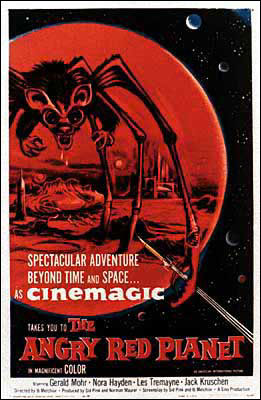
The Angry Red Planet is a 1959 American science fiction film directed by Ib Melchior and starring Gerald Mohr.
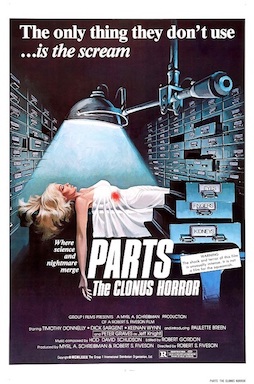
Parts: The Clonus Horror, also known as The Clonus Horror, or simply Clonus, is a 1979 science fiction horror film directed by Robert S. Fiveson, and stars Peter Graves, Tim Donnelly, Dick Sargent, Keenan Wynn, Paulette Breen and Frank Ashmore. The film is about an isolated desert community where clones are bred to serve as a source of replacement organs for the wealthy and powerful. The film was nominated at the 7th Saturn Awards in the category "Best Film Produced for Under $1,000,000".
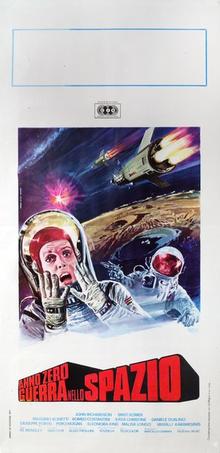
Cosmos: War of the Planets is a 1977 English-language Italian science fiction film directed by Alfonso Brescia and starring John Richardson.

The Contract is a 2006 German-American action thriller film directed by Bruce Beresford and written by television writer Stephen Katz and John Darrouzet. The Contract stars Morgan Freeman as professional assassin Frank Carden and John Cusack as a teacher who gets entangled into his latest assignment during a camp trip with his son. Released direct to video in the United States and Europe, The Contract received little critical notice despite its high-profile cast.

Time Walker is a 1982 American science fiction horror film directed by Tom Kennedy.

The Private Navy of Sgt. O'Farrell is a 1968 American comedy film directed by Frank Tashlin and starring Bob Hope, Phyllis Diller, and Jeffrey Hunter. It was the final film for Tashlin, who died in 1972.

The Violent Years is a 1956 American exploitation film directed by William Morgan and starring Jean Moorhead as Paula Parkins, the leader of a gang of juvenile delinquent high school girls. The film is notable for having an uncredited Ed Wood as the author of its screenplay. It was released in 1956 on a double bill with the German import Conchita and the Engineer.

Tail Spin is a 1939 aviation film. The screenplay was written by Frank Wead and directed by Roy Del Ruth. It was based on the book, "Women with Wings: A novel of the modern day aviatrix", authored by Genevieve Haugen, who was also an advisor and stunt pilot in the film. Tail Spin starred Alice Faye, Constance Bennett, Nancy Kelly, Joan Davis, Charles Farrell and Jane Wyman.

Lost Continent is a 1951 American black-and-white science fiction film drama from Lippert Pictures, produced by Jack Leewood, Robert L. Lippert, and Sigmund Neufeld, directed by Sam Newfield, that stars Cesar Romero, Hillary Brooke, Whit Bissell, Sid Melton, Hugh Beaumont and John Hoyt.
Dance of the Dwarfs is a 1983 American horror adventure film directed by Gus Trikonis and starring Peter Fonda and Deborah Raffin. It is based on the 1968 novel of the same name by Geoffrey Household.
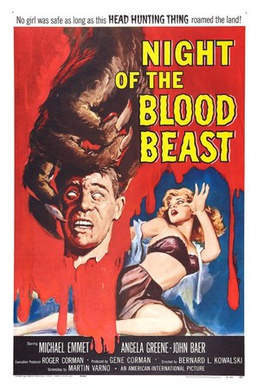
Night of the Blood Beast is a 1958 American science-fiction horror film about a team of scientists who are stalked by an alien creature, which implants its embryos in an astronaut's body during a space flight. Produced by exploitation filmmaker Roger Corman and his brother Gene, it was one of the first films directed by Bernard L. Kowalski and was written by first-time screenwriter Martin Varno, who was 21 years old. It starred several actors who had regularly worked with Roger Corman, including Michael Emmet, Ed Nelson, Steve Dunlap, Georgianna Carter and Tyler McVey. The film was theatrically released in December 1958 as a double feature with She Gods of Shark Reef.

Irene Tsu is an actress who started in the film Flower Drum Song in 1961. She was featured in an advertising campaign in the 1960s. She speaks English and three varieties of Chinese.
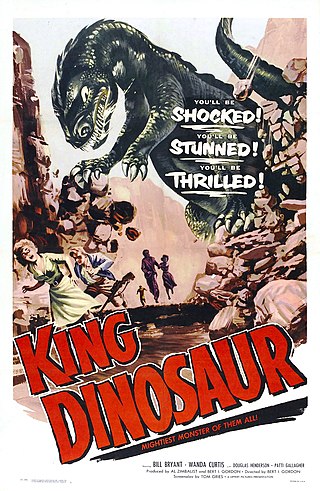
King Dinosaur is a 1955 science fiction film starring William Bryant and Wanda Curtis with narration by Marvin Miller. It was co-written, produced, and directed by Bert I. Gordon, in his directorial debut. The film was featured on season 2 of Mystery Science Theater 3000.

Escape from Fort Bravo is a 1953 American Anscocolor Western film set during the American Civil War. Directed by John Sturges it stars William Holden, Eleanor Parker, and John Forsythe.

The Savage Is Loose is a 1974 American drama film produced and directed by George C. Scott. It stars Scott, Trish Van Devere, John David Carson and Lee H. Montgomery.
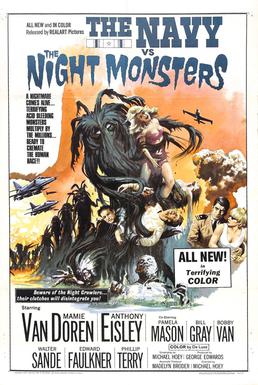
The Navy vs. the Night Monsters is a 1966 independently made American science fiction-monster film drama produced by Jack Broder, written and directed by Michael A. Hoey, that stars Mamie Van Doren, Anthony Eisley, Billy Gray, Bobby Van and Pamela Mason. The film was distributed by Realart Pictures Inc.
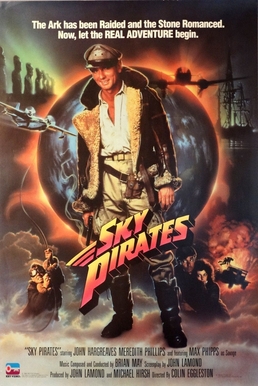
Sky Pirates is a 1986 Australian adventure film written and produced by John D. Lamond, and directed by Colin Eggleston. The film was inspired by Steven Spielberg's Raiders of the Lost Ark (1981), as well as borrowing liberally from The Philadelphia Experiment (1984), The Deer Hunter (1978), Dirty Harry (1971) and Mad Max (1979).
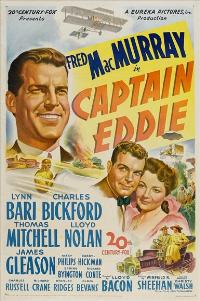
Captain Eddie is a 1945 American drama film directed by Lloyd Bacon, based on Seven Were Saved by "Eddie" Rickenbacker and Lt. James Whittaker's We Thought We Heard the Angels Sing. The film stars Fred MacMurray, Lynn Bari and Charles Bickford. Captain Eddie is a "biopic" of Rickenbacker, from his experiences as a flying ace during World War I to his later involvement as a pioneering figure in civil aviation, and his iconic status as a business leader who was often at odds with labour unions and the government.

Flight Nurse is a 1953 American drama war film directed by Allan Dwan and stars Joan Leslie and Forrest Tucker. The film is largely based on the life of Lillian Kinkella Keil, one of the most decorated women in American military history. Flight Nurse begins with the dedication: "This picture is respectfully dedicated to that brave legion of military nurses who are serving with the armed forces of free nations all over the world. These angels of mercy – shoulder to shoulder, share the danger and hardships of free fighting men everywhere, with devotion above and beyond the call of duty."


















